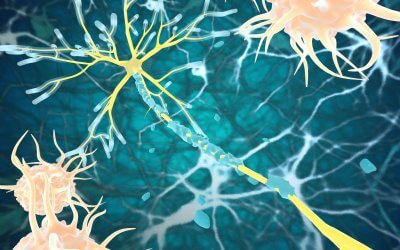Why bank Amnion from your placenta?
Why bank Amnion from your placenta?
Why bank Amnion from your placenta?
Access proven therapies
Placenta tissue banking is a chance for your family to access the incredible potential of your amniotic membrane.
Since the early 1900s, the amniotic membrane has been used to treat burns, wounds, ulcers and eye conditions, and is now expected to revolutionise the world of conventional medicine thanks to its remarkable therapeutic potential.
Cells4Life is committed to providing your baby with the best possible sample, so that they can access the maximum number of therapies in future.
By choosing to store your Amnion alongside your baby’s cord blood, cord tissue and Placenta Cells, your family will have access to the widest range of treatments if and when they need them.
Placenta cells storage
Cells4Life is the UK’s only placenta tissue bank, enabling you to make the most of your baby’s birth and protect your family’s long-term health. Alongside Amnion placenta storage, we also store cells from the chorionic villi.

What is the amnion or amniotic membrane?
The amnion (also known as the ‘amniotic membrane’) is the innermost layer of the placenta. It is a thin sheet of epithelial and stromal cells, which have been used in various therapies since the early twentieth century.
It begins as a sheath around the umbilical cord, which evolves during pregnancy into a thin lining of the placenta sac. Placenta tissue is particularly significant because it contains collagen, fibronectin and hyaluronic acid; these three components are linked with enhanced healing.
The amniotic membrane also contains a combination of growth factors and anti-inflammatory proteins, which can help cells communicate when the body is damaged or diseased. There is also evidence that placenta tissue is antimicrobial.
The very first documented used of the amniotic membrane was in 1910 when scientists found an amnion skin graft provided superior results compared with other methods. Then, in 1913, doctors reported its beneficial effect for healing skin wounds.
Since then, it has been used as both a skin graft and a dressing and in particular, has been used in ophthalmology (i.e. in therapies for eye conditions).
Why store Amnion tissue?
Here are the top four reasons to choose Amnion placenta tissue banking:
Regenerative potential
The amniotic membrane has been used over the past century to treat burns, skin wounds and ulcers. It is now the subject of a growing list of clinical trials for conditions such as diabetes, stroke, and more. Incredibly, cells taken from the amniotic membrane have even been used to 3D print body parts.
Proven therapies
Banking placenta tissue is not just an investment in future therapies, it is already a proven therapeutic option for various conditions – from treating burns to healing ulcers, as well as eye conditions and arthritis.
More cells, more treatments
If you choose placenta banking alongside cord blood and tissue storage, your child will have access to the maximum number of cells possible. More cells mean more treatment opportunities – not just today, but for the rest of their life. The amniotic membrane also has additional topical applications so choosing to store both Placental Cells and Amnion is the best way to ensure they can access the newest and best therapies as they become available.
Protect baby and the rest of the family
The amniotic membrane is also considered non-immunogenic, which means its use does not cause a substantial immune response and can therefore be used to treat unmatched patients.
Why do parents choose Amnion placenta tissue banking?
Scientists are still discovering potential uses for the placenta. There are clinical trials investigating its use in therapies for conditions such as:
Ulcers
In 2017, researchers found that the amniotic membrane induced ‘epithelialisation’, which is the process where the body can replace skin cells in a wound. Other studies have also shown amnion tissue is helpful in healing diabetic foot ulcers which affect 10% diabetes suffers in the UK.
Lung & liver fibrosis
The powerful anti-inflammatory effect of the amniotic membrane may also make it the ideal therapeutic option for liver fibrosis. In an animal model, the application of amnion resulted in tissue regeneration, inhibits fibrosis (scarring of connective tissue), and reduces inflammation.
Cardiovascular conditions
Studies suggest that an amnion injection of cells could be used to treat cardiovascular defects while patches of the amniotic membrane have been used to treat patients with inflammatory cardiovascular conditions.
3D printers are one of the hottest pieces of technology today – but did you know they can print parts of the human body? Scientists have used stem cells from the amniotic membrane to create functional muscles, jawbone fragments and even ears.
Dry eye
The amniotic membrane has also been used to treat more everyday conditions. Doctors have used it to enhance the recovery of 90 patients with severe dry eye and saw an improvement in 88% of cases.
Brain injury
Growing number of studies suggest placenta cells could help with acute brain injury by reprogramming inflammatory responses, and permanently improving neurological function.
Amnion skin graft
The amniotic membrane contains a significant number of cytokines and growth factors, which means it can support wound healing and reduce the formation of scar tissue. It is also thought to reduce pain when applied to a wound. Because it is non-immunogenic, it is also ideal for allogeneic use as it is unlikely that the immune system will reject it.
A 2016 study concluded that using the amniotic membrane to dress burns wounds can improve pain and result in faster healing.
Type 2 diabetes
The amniotic membrane could form effective therapy for conditions that affect millions of people around the world. For instance, an amnion injection of placenta tissue-derived cells might be able to improve glycaemic control in patients with diabetes, according to a study in 2016.
References:
- B. Weber, S. M. Zeisberger, and S. P. Hoerstrup, “Prenatally harvested cells for cardiovascular tissue engineering: fabrication of autologous implants prior to birth,” Placenta, vol. 32, Supplement 4, pp. S316–S319, 2011.
- D. Schmidt, A. Mol, C. Breymann et al., “Living autologous heart valves engineered from human prenatally harvested progenitors,” ells in type 2 diabetes: a pilot study.” Front Med. 2011 Mar;5(1):94-100. doi: 10.1007/s11684-011-0116-z. Epub 2011 Mar 17.
- Lin YC, Ko TL, Shih YH, et al. Human umbilical mesenchymal stem cells promote recovery after ischemic stroke. Stroke. 2011;42:2045–2053
- https://www.ncbi.nlm.nih.gov/pubmed/28413063
- https://www.ncbi.nlm.nih.gov/pmc/articles/PMC5426882/
- https://www.england.nhs.uk/north/wp-content/uploads/sites/5/2018/05/NWCSN_Diabetes_Footcare_Final_Report_2017-1.pdf
- Fetterolf D, Snyder R. Scientific and Clinical Support for the Use of Dehydrated Amniotic Membrane in Wound Management. Wounds. 2012;24(10):299-307.
- Zelen C, Serena T. Amniotic Membrane: Can it facilitate healing? Podiatry Today. 2015 Apr;28(4). Available at http://www.podiatrytoday.com/amniotic-membrane-can-it-facilitate-healing
- https://www.ncbi.nlm.nih.gov/pmc/articles/PMC5898584/
- https://www.ncbi.nlm.nih.gov/pmc/articles/PMC5270242/
- https://www.ncbi.nlm.nih.gov/pubmed/20719087
- https://www.ncbi.nlm.nih.gov/pmc/articles/PMC5845510/
- https://www.ncbi.nlm.nih.gov/pmc/articles/PMC6434489/
- https://www.ncbi.nlm.nih.gov/pubmed/27735027
Request your welcome pack
Why choose Cells4Life?
Cells4Life is the only placenta tissue bank in the UK. We have also stored more UK samples than any other stem cell storage bank. Everything about our service has been designed to provide your baby and family with the best long-term health protection possible, which is why we offer to store your cord blood, cord tissue, Placental Cells and Amnion.
Here are just a few of the reasons why you should choose to store Amnion with Cells4Life:
- The UK’s only placenta tissue banking service
- More stem cells for more therapies
- Multiple sample and dual location storage
- Most comprehensive range of services
- Year-round collection
- Dedicated couriers
- Industry-leading technology
- HTA-licensed
Why choose Cells4Life?
Cells4Life is the only placenta tissue bank in the UK. We have also stored more UK samples than any other stem cell storage bank. Everything about our service has been designed to provide your baby and family with the best long-term health protection possible, which is why we offer to store your cord blood, cord tissue,Placental Cells and Amnion.
Here are just a few of the reasons why you should choose to store Amnion with Cells4Life:
- The UK’s only placenta tissue banking service
- More stem cells for more therapies
- Multiple sample and dual location storage
- Most comprehensive range of services
- Year-round collection
- Dedicated couriers
- Industry-leading technology
- HTA-licensed
Why choose Cells4Life?
Cells4Life is the only placenta tissue bank in the UK. We have also stored more UK samples than any other stem cell storage bank. Everything about our service has been designed to provide your baby and family with the best long-term health protection possible, which is why we offer to store your cord blood, cord tissue, Placental Cells and Amnion.
Here are just a few of the reasons why you should choose to store your Amnion with Cells4Life:
- The UK’s only placenta tissue banking service
- More stem cells for more therapies
- Multiple sample and dual location storage
- Stem cell insurance
- Most comprehensive range of services
- Year-round collection
- Dedicated couriers
- Industry-leading technology
- HTA-licensed
Quick questions…
What happens to the placenta after birth?
How much does placenta banking cost?
The price of placenta banking varies according to which service you choose. Storing just Placental Cells OR Amnion starts at £1,950, while storing Placental cells AND Amnion starts at £2,650. You can also choose to store your placenta alongside umbilical cord blood and cord tissue with our VIP package. You can find out more about your options on our pricing page.
Is placenta banking compatible with placenta encapsulation?
Is placenta banking compatible with delayed cord clamping?
Latest placenta banking news
Read more about the potential uses and benefits of placenta banking and storage on our stem cell blog:
Umbilical Cord Stem Cell Eye Drops Could Offer Relief From Dry Eye
A recent phase 1 trial has found that umbilical cord stem cell eye drops could help relieve the symptoms of dry eye for patients with a severe, treatment-resistant form of the condition. What is dry eye? Dry eye is a chronic condition where either the eyes do not...
Early Insights Into Placenta Stem Cell Therapy for Multiple Sclerosis
Researchers are investigating a novel placenta-derived stem cell therapy for multiple sclerosis, a currently incurable degenerative neurological condition. A recent phase 1 clinical trial, with findings published in Scientific Reports, assessed the safety and...
Study Shows Improvement From Placenta Stem Cell Injections for Knee Osteoarthritis
As the world population ages, osteoarthritis (OA), a degenerative, “wear-and-tear” form of arthritis which most often occurs during middle age and onwards,[1] becomes more common and therefore more burdensome. Knee osteoarthritis, in particular, is a major cause of...





